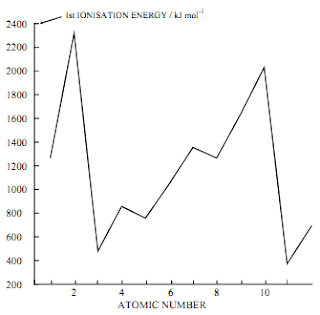Before proceeding with this section please make sure you have seen all the lectures on the Basic Calculations in A-level Chemistry page
Mass number and atomic number
Atomic Number (Z) Number of protonsin the nucleus of an atom
Mass Number (A) Sum of the protons and neutronsin the nucleus
What is the avogadro's constant?
The
Avogadro Constant is a constant number used to refer to atoms, molecules, ions and electrons. Its value is 6.023 x 10
23 mol
-1 . I.E 1 Mole of Sodium contains 6.023 x 10
23 number of particles.
What is the Relative Atomic Mass (Ar)?
The mass of an atom relative to the 12C isotope having a value of 12.000 is called as the Ar.
Relative Isotopic Mass Similar, but uses the mass of an isotope Eg 238U
Relative Molecular Mass (Mr) Similar, but uses the mass of a molecule Eg CO2, N2
Relative Formula Mass Used for any formula of a species or ion E.g NaCl, OH¯
What are Isotopes?Definition Atoms with ... the same atomic number but different mass number or
the same number of protons but different numbers of neutrons.
Important: Chemical properties of isotopes are identical
Example: Chlorine contains 75% by mass Cl (35) and 25% by mass Cl (37). Calculate the relative atomic mass of Chlorine.
Ar of Cl = (75 x 35) + (25 x 37) = 35.5
100
What is the mass spectra?
A
mass spectrum is an intensity(Abundance) vs.
m/z (mass-to-charge ratio) plot representing a chemical analysis.
Hence, the mass spectrum of a sample is a pattern representing the distribution of ions by mass (more correctly: mass-to-charge ratio) in a sample.
How to calculate the Relative Atomic mass from a mass spectra
What is the empirical formula
A formula that gives the simplest whole-number ratio of atoms in a compound.
How to calculate the empirical formula?
- Start with the number of grams of each element, given in the problem.
- If percentages are given, assume that the total mass is 100 grams so that
the mass of each element = the percent given.
- Convert the mass of each element to moles using the molar mass from the periodic table.
- Divide each mole value by the smallest number of moles calculated.
- Round to the nearest whole number. This is the mole ratio of the elements and is
represented by subscripts in the empirical formula. - If the number is too far to round (x.1 ~ x.9), then multiply each solution by the same
factor to get the lowest whole number multiple. - e.g. If one solution is 1.5, then multiply each solution in the problem by 2 to get 3.
- e.g. If one solution is 1.25, then multiply each solution in the problem by 4 to get 5.
Example;
A compound was found to contain 13.5 g Ca, 10.8 g O, and 0.675 g H. What is the empirical formula of the compound?
Calculating empirical formula from combustion data
Example : Calculating the empirical formula of a hydrocarbon
The general procedure:
? g O = (given) g total - (calculated) g C - (calculated) g H
- Calculate the empirical formula of the compound from the grams of carbon, hydrogen, and oxygen.
Sample Question: Dianabol is one of the anabolic steroids that has been used by some athletes to increase the size and strength of their muscles.The molecular formula of Dianabol, which consists of carbon, hydrogen, and oxygen, can be determined using the data from two different experiments. In the first experiment, 14.765 g of Dianabol is burned, and 43.257 g CO
2 and 12.395 g H
2O are formed. In the second experiment, the molecular mass of Dianabol is found to be 300.44. What is the molecular formula for Dianabol?
? g O = 14.765 g total - 11.805 g C - 1.3870 g H = 1.573 g O
We now calculate the empirical formula.
The empirical formula is C10H14O. We use it to calculate the molecular formula:
Empirical formula mass = 10(12.011) + 14(1.00794) + 1(15.9994) = 150.22
molecular formula C20H28O2



















